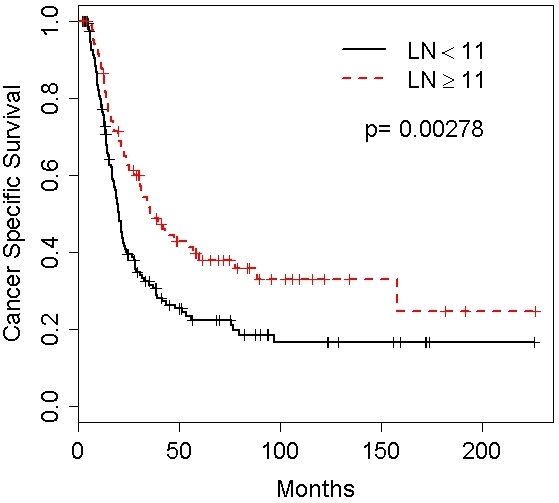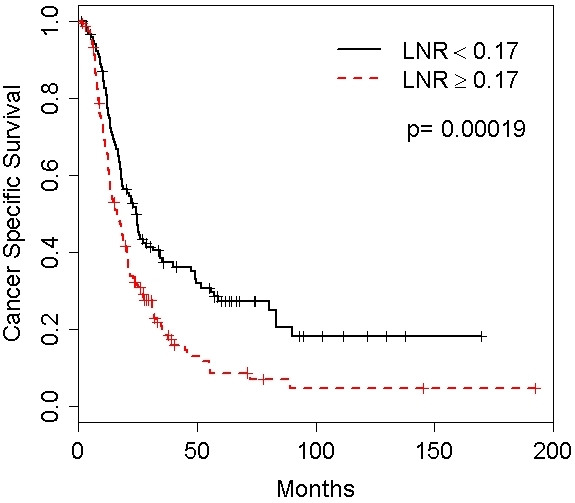Prognostic Relevance of the Lymph Node Ratio and Variability of Lymph Nodes Evaluated Pathologically for Pancreatic Cancer Survival
Marianne Huebner*1,2, Michael L. Kendrick1, Kaye M. Reid Lombardo1, Florencia G. Que1, Terry M. Therneau2, John H. Donohue1, Michael G. Sarr1, Michael B. Farnell1
1Surgery, Mayo Clinic, Rochester, MN; 2Biomedical Statistics and Informatics, Mayo Clinic, Rochester, MN
Background: Lymph node (LN) metastasis is associated with poor survival in pancreatic cancer. The variability in number of LN evaluated pathologically (leading to the pN status) and its impact on the LN ratio (LNR) is not known. Aim: To determine the minimum number of LN that needs to be evaluated to allow accurate stratification for prognosis and therapy, and to determine prognostic significance of LNR. Methods: 499 patients underwent pancreatectomy for pancreatic cancer from 1997-2004. LNR, number of nodes examined, and number of metastatic nodes identified pathologically were used to identify risk survival groups using a re-scaled log rank statistic validated with bootstrap resampling methods. The prognostic value was assessed with Cox regression models. The probability that a patient was staged correctly as N0 was estimated with a beta-binomial model.Results: The median number of LN examined was 10 (range 2-74). To evaluate the minimum number of LNs needed to reliably stratify patients as pN0, cutoff values of <11 vs ≥11 nodes examined in these pN0 patients classified patients into low or high risk for survival. Overall survival for pathologically node negative (pN0) patients with <11 nodes examined was worse than for pN0 patients with ≥11 LNs (Fig 1) with a hazard ratio of 1.67 (95% CI:1.2, 2.3, p<0.003) and 3-year survivals of 32% vs 50% respectively. The probability of missing a positive node when <11 nodes were evaluated was 20%. The 3-year survival for pN1 patients with <11 nodes evaluated was similar to pN1 patients with ≥11 nodes evaluated. When LNR was evaluated, LNR ≥0.17 indicated worse survival with adjusted hazard ratio of 1.72 (95% CI:1.3, 2.3, p<0.001) than LNR <0.17 with 3-year survivals of 37% vs. 19% respectively.Conclusion: Patients with N0 disease who have less than 11 LN evaluated have worse survival outcomes suggesting that metastatic nodes were missed by sampling too few nodes (<11). For pN1 patients, LNR more accurately stratifies patient cohorts with respect to pancreatic cancer survival.
Kaplan-Meier survival curves for LN counts in pN0 patients.
Kaplan-Meier survival curves for lymph node ratios in pN1 patients.
Back to 2011 Program



